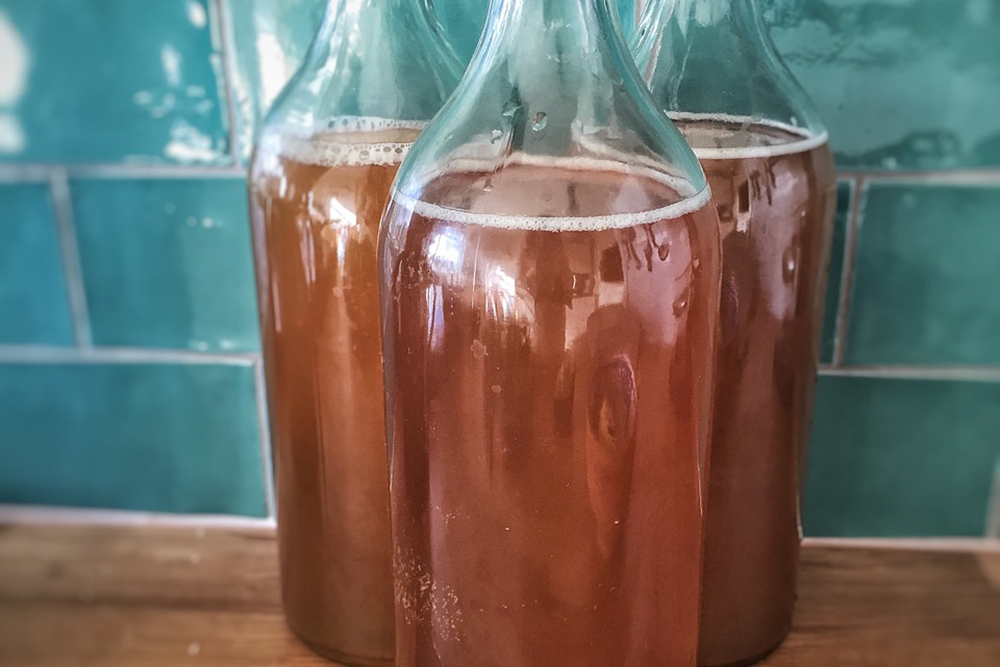Kombucha: A Natural Boost of Probiotics (Plus Recipe)

At American School of Natural Health (ASNH), we believe that everyone can achieve optimal health safely and naturally. One way to achieve this is by taking in a healthy dose of healthy probiotics, and Kombucha is a great source of this.
Kombucha is an ancient probiotic drink, made from the fermentation of tea. It is becoming increasingly popular and is relatively easy to make, and once you’ve got the ball rolling you can share your new gift with your friends and neighbors! If you have children, you can get them to help as kids are often more willing to try foods if they have helped to prepare them.
Basic Kombucha Recipe:
• A SCOBY (Symbiotic Culture of Bacteria and Yeast) these can often be bought at health-food stores, online or at farmers markets
• 1 liter boiled filtered water
• 4 grams of tea leaves or bagged tea (black or green)
• 80 grams of sugar (don’t worry – this feeds the SCOBY and there is hardly any sugar remaining in the finished Kombucha – do not use sugar substitutes)
• 200ml ‘starter tea’ (previous brew of Kombucha tea or a store bought unpasteurized Kombucha drink)
Be mindful of the sensitive SCOBY: Use wooden utensils, rinse everything that will touch the SCOBY with warm water and a little vinegar – not detergent, metal or soap. Brew 1 liter of strong tea – leave the bags or leaves in for 20 minutes, then remove. Add the sugar and stir until dissolved. Allow to cool. In a large clean glass jar add the starter tea, the cool new batch of sugared tea and the SCOBY. Put a clean cloth over the top of the jar and secure with a rubber band – the SCOBY needs to breathe. Place it somewhere warm (around 20 degrees or above) – but not in direct sunlight. After about a week a skin of fresh SCOBY should have formed on the top. You can taste your brew – the longer you leave it the more acidic it tastes. If you are happy with your brew, decant 4/5’s of it into lidded bottles and refrigerate. The remaining 1/5 of liquid is needed for the next batch, you should now have two active SCOBYs now, so you may like to share one. Colder climates require more ‘starter’ tea, in warmer months you can use as little as 1/10th of starter tea to a brew. You can experiment with second fermentation once you get the hang of the basic recipe.
Look online for flavoring ideas!
To learn more healthy and natural ways to achieve optimal health for yourself or to help others, consider taking one of our 100% online courses or programs specifically focusing in natural health. Email us at [email protected] or call 813-445-4202.
